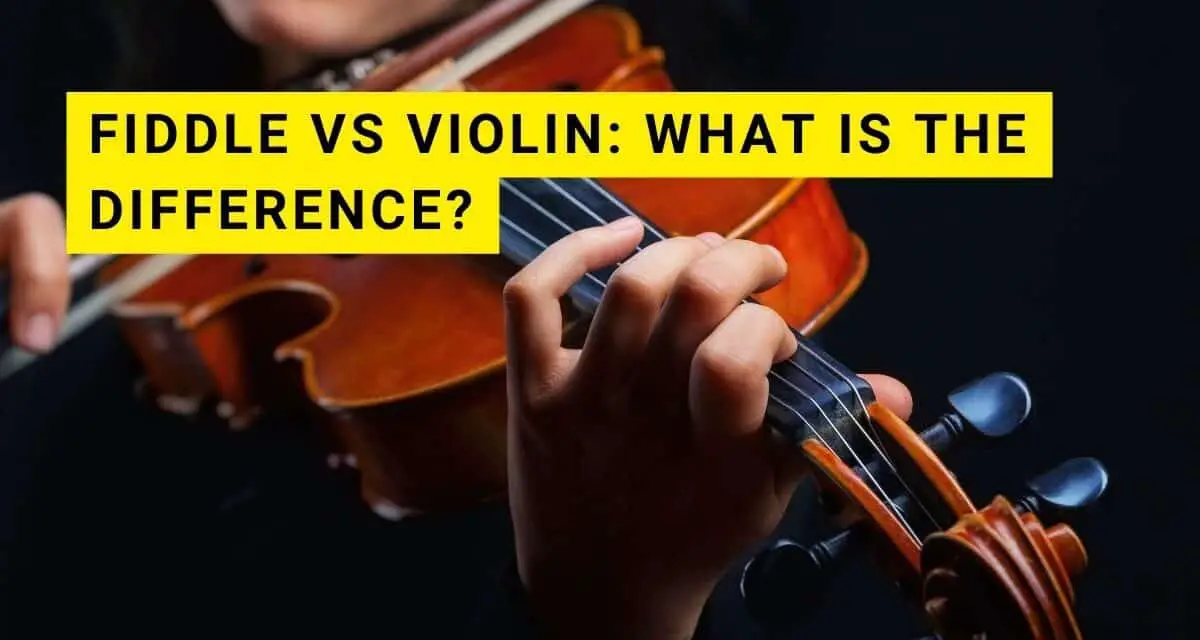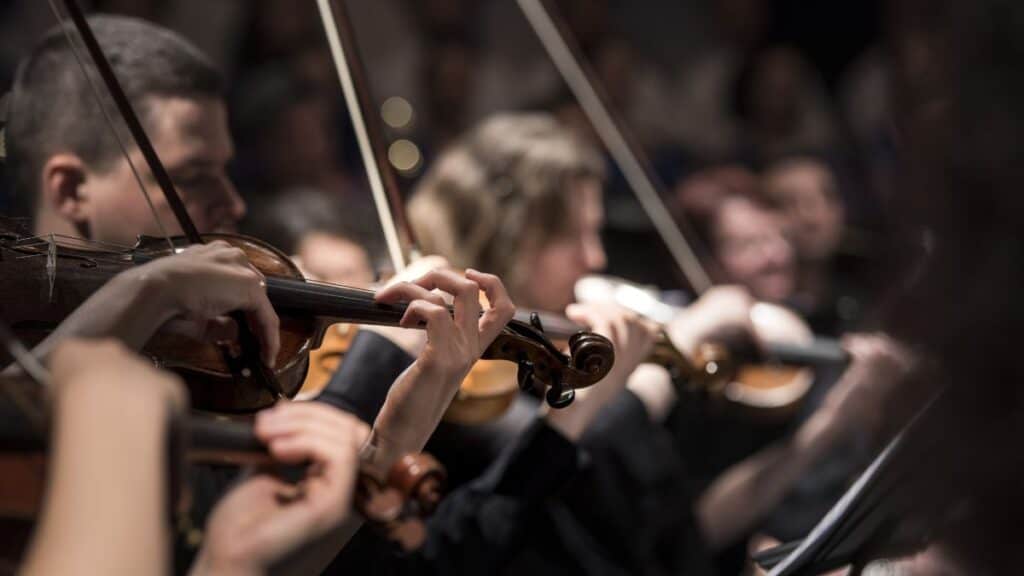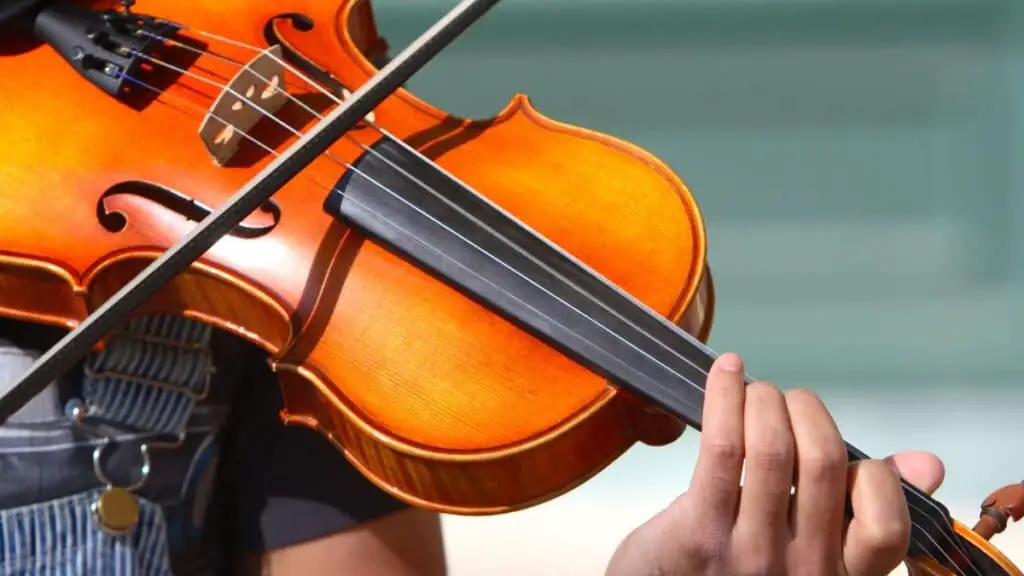Let’s clear the air with an often confusing question for many music lovers which is “What’s the difference between a violin and a fiddle?”
The answer is simple.
There is no physical difference between the fiddle and the violin. They are both the same instrument, and whether it is called a violin or fiddle is defined by the style in which the instrument is being played.
The violin is often associated with classical and orchestral music, while the fiddle is associated with bluegrass and folk styles of music.
You could even say the fiddle is just an informal way of referring to the violin in certain music styles.
But as we delve deeper into their histories, physicalities, and the music they produce, we’ll uncover some distinguishing features.
Background and Basics
Now, let’s strike the right chord and dive into the rich history of these instruments.
The violin, birthed in early 16th century Italy, is often associated with classical and baroque music, setting the stage for stirring symphonies and grand orchestras.
The fiddle, on the other hand, has a less clear-cut origin story. Its name is derived from the Medieval Latin word “vitula”, meaning stringed instrument. Fiddle music is linked with folk traditions, resonating through country dances and bluegrass jams. In fact, the word fiddle can actually refer to any violin family instrument but is almost always associated with the violin.
A closer look at these stringed instruments reveals a harmonious design. Crafted from the same set of materials, both the violin and the fiddle are typically made of spruce or maple.
They share the same size, structure, and a set of four strings tuned to the same pitches: G, D, A, E. Both instruments are played with a bow, crafted most often from horsehair.
However, our fiddle and violin are not entirely identical twins. There’s more than meets the eye, as the subtle distinctions are often heard rather than seen. But before we dip our toes into those differentiating notes, let’s establish our understanding of their identical physical form. This way, we’ll be prepared to truly appreciate the unique tunes that each instrument can create.
Physical Differences
Now that we’ve become acquainted with our stringed friends, it’s time to delve into the nuances that distinguish these instruments from each other. You see, while the violin and fiddle might be identical twins in the construction department, the way they’re set up and adjusted can lead to different performances.
Let’s start with the bridge. The violin’s bridge, the wooden support that holds the strings up, is typically shaped in a perfect arch. This design allows for distinct, individual notes to be played with precision, which is perfect for the intricate melodies of classical violin playing.
On the flip side, our trusty fiddle often sports a flatter bridge as that is what many fiddle players prefer. This setup promotes the easier playing of double stops and chords, common features in folk, bluegrass, and country tunes. It’s this bridge that allows fiddlers to play two or more notes simultaneously, adding a rich layer to their music.
Strings also play a part in the violin vs. fiddle divergence. Violins usually come with high-quality, often synthetic strings designed to produce a clear, rich, and rounded sound. Fiddles, however, might be strung with steel strings, offering a brighter and more piercing tone, typically suited to the lively atmosphere of a hoedown or a fast-paced bluegrass jam.
Finally, let’s talk about the tailpiece. Violins often use a tailpiece with fine tuners on each string to achieve precise tuning – a requirement for the pitch-perfect pieces performed in concert halls. Fiddles might only have one fine tuner on the E string, as absolute pitch precision is less critical in folk genres.
So, while they might look like identical twins, the violin and the fiddle are like two artists with different styles, using their unique setups to create their distinctive sounds.
Playing Techniques
Moving on from the physicalities, let’s unravel the unique playing techniques that distinguish the violin from the fiddle.
While they may share the same four strings and similar designs, the way a musician interacts with these instruments can paint two completely different soundscapes.
When you picture a classical violinist, you might envision a symphony orchestra, the musician standing erect, their bow gliding gracefully across the strings, playing each note with precision.
This is because the violin is typically used in classical music, which requires discipline, accuracy, and often rigorous adherence to musical notation and the violin playing style. The vibrato, a technique producing slight pitch variation, is frequently used by violinists to add richness and warmth to the notes.
Now imagine a fiddler, perhaps seated on a porch, their foot tapping in rhythm, their bow bouncing energetically across the strings.
Fiddlers commonly use techniques like “drone” (playing two strings simultaneously), “shuffle” (a specific rhythmic bowing pattern), string bending, and “slides” (sliding from one note to another) to give their music that signature lively, foot-stomping sound found in genres like bluegrass, country, and folk.
Violin Music Genres: Classical Music and Orchestra
When it comes to dance floors, the violin undoubtedly has its favorites. The instrument is the darling of the classical world.
Imagine grand concert halls resonating with the harmonious strains of Bach, Beethoven, or Tchaikovsky. It’s hard to overstate the violin’s dominance in this field, with its majestic sound often taking the lead in orchestras, string quartets, and solo performances.
But don’t let its classical prowess limit your imagination. The violin is a musical chameleon, effortlessly adapting to diverse music genres. It frequently features in jazz, where its smooth tones add a sophisticated edge. In pop and rock, the violin’s rich sound can lend an emotional layer to a catchy tune. Thus, the violin showcases its versatility, weaving seamlessly into various music styles while retaining its unique charm.
Fiddle Music Genres: Bluegrass Hoedowns and Folk
Now, let’s shift our focus to the fiddle, the heart and soul of folk and bluegrass traditions.
The fiddle revels in energetic and vibrant notes that spark life into barn dances and family gatherings. When you hear the lively rhythms of bluegrass, old-time music, and Irish or Scottish traditional music, you’re likely enjoying the spirited performance of a fiddle.
Fiddles are the life of the party, their bright and infectious sound perfectly suited to communal celebrations or a cozy fireside jam.
Whether it’s in a packed dance hall or a casual folk gathering, the fiddle brings a distinct sense of joy and energy to the musical mix.
Though cast in different roles, both the violin and the fiddle share a passion for performance. These stringed virtuosos, each with their favorite genres, bring a world of musical joy to our ears through the hands of skilled musicians.
Perspective of Musicians
Let’s not forget about the musicians who breathe life into these instruments.
From classical violinists serenading concert halls to spirited fiddlers lighting up barn dances, each has a unique perspective on the violin-fiddle dichotomy.
Violinists often express reverence for the discipline, precision, and technical mastery required in their craft. They speak of the emotion and depth they can evoke with each stroke of the bow, whether playing a soul-stirring concerto or an intricate chamber piece.
Fiddlers, conversely, often emphasize the joy and freedom they find in their music. For them, it’s not just about playing the notes on the sheet. It’s about feeling the rhythm, engaging with the audience, and bringing a communal spirit to life through their lively tunes. There’s a sense of flexibility, spontaneity, and a touch of the unpredictable in their performances.
Often, classical violinists adhere strictly to music theory and written pieces while the fiddle is more loose and involved with a freeform playing style.
However, there’s a common refrain among both violinists and fiddlers. They all agree that whether you’re fiddling or playing the violin, the magic lies in how you connect with the instrument and the music.
Conclusion: Both Styles Share the Same Amazing Stringed Instrument
And there you have it—the beautiful symphony of differences and similarities between the violin and the fiddle.
Overall, the words fiddle and violin both account for the same 4-stringed instrument.
Despite their physical likeness, these instruments dance to their tunes, defined by subtle physical adjustments, distinct playing techniques, and the genres they typically inhabit.
But let’s not forget, it’s not the instrument that makes the music—it’s the musician. Whether you’re entranced by a violin’s sonata or invigorated by a fiddle’s reel, remember to appreciate the artist’s skill and passion that brings these instruments to life.
In essence, the violin and the fiddle might be two sides of the same coin. Still, the spirit they embody and the music they produce are as varied and unique as the musicians who play them.
As you tune into your next music session, keep an ear out for these differences—it’s these nuances that make our musical landscape so rich and diverse.








